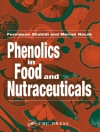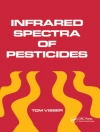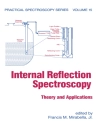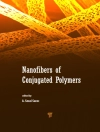Reflecting the tremendous growth of this hot topic in recent years, this book covers C-H activation with a focus on heterocycle synthesis.
As such, the text provides general mechanistic aspects and gives a comprehensive overview of catalytic reactions in the presence of palladium, rhodium, ruthenium, copper, iron, cobalt, and iridium. The chapters are organized according to the transition metal used and sub-divided by type of heterocycle formed to enable quick access to the synthetic route needed. Chapters on carbonylative synthesis of heterocycles and the application of C-H activation methodology to the synthesis of natural products are also included.
Written by an outstanding team of authors, this is a valuable reference for researchers in academia and industry working in the field of organic synthesis, catalysis, natural product synthesis, pharmaceutical chemistry, and crop protection.
Tabela de Conteúdo
List of Contributors XXI
Foreword 1 XXVII
Foreword 2 XXIX
Preface XXXI
1 Computational Studies of Heteroatom-Assisted C–H Activation at Ru, Rh, Ir, and Pd as a Basis for Heterocycle Synthesis and Derivatization 1
Kevin J. T. Carr, Stuart A. Macgregor, and Claire L. Mc Mullin
1.1 Introduction 1
1.2 Palladium 2
1.2.1 Intramolecular Heteroatom-Assisted C–H Activation 2
1.2.1.1 Early Computational Studies 2
1.2.1.2 The Role of the Base, Solvent, and Additives on Pd-Mediated Intramolecular C–H Activation 5
1.2.1.3 Intramolecular C–H Activation of Heterocyclic Substrates 9
1.2.2 Intermolecular C–H Activation 11
1.2.2.1 Early Computational Studies 11
1.2.2.2 Direct Functionalization via C–H Activation of Heterocyclic Substrates 15
1.3 Ruthenium, Rhodium, and Iridium 22
1.3.1 Intramolecular Heteroatom-Assisted C–H Activation 22
1.3.2 Intermolecular C–H Activation 25
1.3.3 C–H Activation and Functionalization 27
1.3.3.1 Heterocycle Formation with Internal Oxidants 28
1.3.3.2 Heterocycle Formation without Internal Oxidants 34
1.3.4 Alkenylation and Amination 38
1.4 Conclusions 40
Acknowledgments 41
References 41
2 Pd-Catalyzed Synthesis of Nitrogen-Containing Heterocycles 45
Lixin Li, Xiaolei Ji, and Hanming Huang
2.1 Introduction 45
2.2 General Consideration on Palladium Chemistry 45
2.3 Heterocycle Synthesis via C(sp3)–H Activation 46
2.3.1 Heterocycle Synthesis via Activated C(sp3)–H Bonds 47
2.3.2 Heterocycle Synthesis via Unactivated C(sp3)–H Bonds 49
2.4 Heterocycles via C(sp2)–H Activation 55
2.5 Conclusions 61
References 62
3 Pd-Catalyzed Synthesis of Oxygen-Containing Heterocycles 65
Yudong Yang and Jingsong You
3.1 Introduction 65
3.2 Palladium-Catalyzed C–H Activation/C–C Formation to Construct Oxacycles 66
3.2.1 Palladium-Catalyzed C–H Bond Arylation 67
3.2.2 Palladium-Catalyzed C–H Olefination 69
3.2.3 Palladium-Catalyzed C–H Alkylation 75
3.2.4 Palladium-Catalyzed C–H Carbonylation and Carboxylation 76
3.3 Palladium-Catalyzed C–H Activation/C–O Formation to Construct Oxacycles 80
3.3.1 Palladium-Catalyzed C–O Bond Formation via C(sp2)–H Activation 81
3.3.2 Palladium-Catalyzed C–O Bond Formation via Allylic C–H Activation 84
3.4 Conclusions 86
References 87
4 Pd-Catalyzed Synthesis of Other Heteroatom-Containing Heterocycles 91
Zhanxiang Liu and Yuhong Zhang
4.1 Introduction 91
4.2 Sulfur-Containing Heterocycles 91
4.2.1 Benzo[b]thiophenes 92
4.2.2 Benzothiazoles 95
4.2.3 Sultones 98
4.2.4 Sultams 100
4.3 Phosphorus-Containing Heterocycles 102
4.3.1 P–C Heterocycles (Dibenzophosphole Oxides) 102
4.3.2 O–P=OHeterocycles 106
4.3.3 P–N Heterocycles 107
4.4 Silicon-Containing Heterocycles 108
4.4.1 Benzosiloles 108
4.4.2 Oxasiline and Azasiline 110
4.5 Summary and Conclusions 112
References 113
5 Rh-Catalyzed Synthesis of Nitrogen-Containing Heterocycles 117
Krishnamoorthy Muralirajan and Chien-Hong Cheng
5.1 Introduction 117
5.2 Synthesis of Five-Membered Nitrogen Heterocycles 118
5.2.1 Synthesis of Indoles 118
5.2.2 Synthesis of Isoindolines 122
5.2.3 Synthesis of Unprotected Indoles 123
5.2.4 Synthesis of Indolines 124
5.2.5 Synthesis of Indazoles 124
5.2.6 Synthesis of Isoxazoles 125
5.2.7 Synthesis of Pyrroles 126
5.2.8 Synthesis of Isoindolin-1-ones 128
5.2.9 Synthesis of 3-Hydroxyisoindolin-1-ones 129
5.2.10 Synthesis of 3-(Imino)isoindolinones 129
5.2.11 Synthesis of Dihydrocarbazoles 131
5.2.12 Synthesis of Sultams 131
5.2.13 Synthesis of Phthalimides 132
5.3 Synthesis of Six-Membered Nitrogen Heterocycles 133
5.3.1 Synthesis of Isoquinolines by Rh(I) Catalysis 133
5.3.2 Synthesis of Isoquinolines by Rh(III) Catalysis 134
5.3.3 Synthesis of 1-Aminoisoquinolines 136
5.3.4 Synthesis of Isoquinolones and Related Derivatives 137
5.3.5 Synthesis of Phenanthridinones 142
5.3.6 Synthesis of Quinolines 143
5.3.7 Synthesis of Naphthyridines 144
5.3.8 Synthesis of Phthalazines 145
5.3.9 Synthesis of Acridines and Phenazines 145
5.3.10 Synthesis of Cinnolines 146
5.3.11 Synthesis of Isoquinolinones and Cinnolinones 147
5.3.12 Synthesis of Dihydropyridines 147
5.3.13 Synthesis of Pyridines 148
5.3.14 Synthesis of Pyridones 150
5.3.15 Synthesis of Pyrimidinones 150
5.4 Synthesis of Quaternary Ammonium Salts 151
5.4.1 Synthesis of Isoquinolinium Salts 151
5.4.2 Synthesis of Quinolizinium and Pyridinium Salts 153
5.4.3 Synthesis of Cinnolinium Salts 153
5.4.4 Synthesis of Isoquinoline N-Oxides and Pyridine N-Oxides 154
5.5 Synthesis of Seven-Membered Nitrogen Heterocycles 155
5.5.1 Synthesis of Azepinones 155
5.5.2 Synthesis of 1, 2-Oxazepines 155
5.6 Summary and Conclusions 156
References 156
6 Rh-Catalyzed Synthesis of Oxygen-Containing Heterocycles 161
Bin Liu, Fang Hu, and Bing-Feng Shi
6.1 Introduction 161
6.2 Synthesis of Five-Membered Oxygen-Containing Heterocycles 161
6.2.1 Intermolecular Annulation 161
6.2.1.1 Phthalides 161
6.2.1.2 Furans 163
6.2.1.3 Other Five-Membered Oxygen-Containing Heterocycles 165
6.2.2 Intramolecular Cyclization 167
6.2.2.1 Dihydrobenzofurans 167
6.2.2.2 Dibenzofuran 168
6.3 Synthesis of Six-Membered Oxygen-Containing Heterocycles 168
6.3.1 Intermolecular Annulation 168
6.3.1.1 Chromenes 168
6.3.1.2 Chromones 174
6.3.1.3 Coumarin 175
6.3.1.4 Other Six-Membered Oxygen-Containing Heterocycles 178
6.3.2 Intramolecular Cyclization 178
6.4 Synthesis of Seven-, Eight-, and Nine-Membered Oxygen-Containing Heterocycles 179
6.4.1 Intermolecular Annulation 179
6.4.2 Intramolecular Cyclization 180
6.5 Summary and Conclusions 181
References 182
7 Ruthenium-Catalyzed Synthesis of Heterocycles via C–H Bond Activation 187
Bin Li and Baiquan Wang
7.1 Introduction 187
7.2 Ruthenium-Catalyzed Heterocycle Synthesis via Intramolecular C–C Bond Formation Based on C–H Bond Activation 188
7.3 Ruthenium-Catalyzed Heterocycle Synthesis via Intramolecular C–N Bond Formation Based on C–H Bond Activation 192
7.4 Ruthenium-Catalyzed Heterocycle Synthesis via Intermolecular C–C/C–O Bond Formation Based on C–H Bond Activation 194
7.4.1 Cyclization with Alkynes 194
7.4.2 Cyclization with Alkenes 198
7.4.3 Cyclization with Carbon Monoxide 201
7.4.4 Cyclization with 1, 2-Diol 202
7.5 Ruthenium-Catalyzed Heterocycle Synthesis via Intermolecular C–C/C–N Bond Formation Based on C–H Bond Activation 203
7.5.1 Cyclization with Alkynes 203
7.5.2 Cyclization with Alkenes 220
7.5.3 Cyclization with Carbon Monoxide 225
7.5.4 Cyclization with Isocyanate 228
7.6 Summary and Conclusions 228
References 229
8 Cu-Catalyzed Heterocycle Synthesis 233
Feng Chen and Ning Jiao
8.1 Introduction 233
8.2 Four-Membered-Ring Formation 233
8.3 Five-Membered-Ring Formation 234
8.3.1 Copper-Catalyzed Synthesis of Pyrroles 234
8.3.2 Copper-Catalyzed Synthesis of Pyrrolidines 237
8.3.3 Copper-Catalyzed Synthesis of Indoles 240
8.3.4 Copper-Catalyzed Synthesis of Indolines 242
8.3.5 Copper-Catalyzed Synthesis of Oxindoles 245
8.3.6 Copper-Catalyzed Synthesis of Indole-2, 3-dione (Isatins) 248
8.3.7 Copper-Catalyzed Synthesis of Indolizines 250
8.3.8 Copper-Catalyzed Synthesis of Carbazoles 250
8.3.9 Copper-Catalyzed Synthesis of Imidazoles 251
8.3.10 Copper-Catalyzed Synthesis of Benzimidazoles 254
8.3.11 Copper-Catalyzed Synthesis of Imidazopyridines 256
8.3.12 Copper-Catalyzed Synthesis of Pyrazoles and Indazoles 260
8.3.13 Copper-Catalyzed Synthesis of Oxazoles 261
8.3.14 Copper-Catalyzed Synthesis of Benzoxazoles 262
8.3.15 Copper-Catalyzed Synthesis of 1, 2, 3-Triazoles 263
8.3.16 Copper-Catalyzed Synthesis of 1, 2, 3-Tetrazoles 264
8.3.17 Copper-Catalyzed Synthesis of Furans 264
8.4 Six-Membered-Ring Formation 266
8.4.1 Copper-Catalyzed Synthesis of Pyridines 266
8.4.2 Copper-Catalyzed Synthesis of Quinolines 267
8.4.3 Copper-Catalyzed Synthesis of Isoquinolines 271
8.4.4 Copper-Catalyzed Synthesis of Quinolinones 272
8.4.5 Copper-Catalyzed Synthesis of Acridones 273
8.4.6 Copper-Catalyzed Synthesis of Phenanthridine 275
8.4.7 Copper-Catalyzed Synthesis of Quinazoline and Quinazolinones 276
8.4.8 Copper-Catalyzed Synthesis of Cinnolines 277
8.4.9 Copper-Catalyzed Synthesis of Pyrimidinone 278
8.4.10 Copper-Catalyzed Synthesis of 1, 4-Dihydropyrazine Derivatives 278
8.4.11 Copper-Catalyzed Synthesis of 1, 3-Oxazines 279
8.4.12 Copper-Catalyzed Synthesis of Oxazinone Derivatives 280
8.4.13 Copper-Catalyzed Synthesis of Chroman Derivatives 280
8.4.14 Copper-Catalyzed Synthesis of Benzolactone Derivatives 281
8.4.15 Copper-Catalyzed Synthesis of Coumarin Derivatives 282
8.4.16 Copper-Catalyzed Synthesis of Xanthone Derivatives 283
8.4.17 Copper-Catalyzed Synthesis of N, S-Heterocycles 284
8.5 Summary 285
References 285
9 Fe- and Ag-Catalyzed Synthesis of Heterocycles 291
Jin-Heng Li and Ren-Jie Song
9.1 Introduction 291
9.2 Iron-Catalyzed Synthesis of Heterocycles 291
9.2.1 Iron-Catalyzed Synthesis of Nitrogen-Containing Heterocycles 292
9.2.2 Iron-Catalyzed Synthesis of Oxygen-Containing Heterocycles 304
9.3 Silver-Catalyzed Synthesis of Heterocycles 307
9.3.1 Silver-Catalyzed Synthesis of Nitrogen-Containing Heterocycles 308
9.3.2 Silver-Catalyzed Synthesis of Oxygen- or Phosphorus-Containing Heterocycles 311
9.4 Conclusion and Outlook 312
References 314
10 Heterocycles Synthesis via Co-Catalyzed C–H Bond Functionalization 317
Naohiko Yoshikai
10.1 Introduction 317
10.2 Heterocycle Synthesis via Low-Valent Cobalt-Catalyzed C–H Activation 319
10.3 Heterocycle Synthesis via High-Valent Cobalt-Catalyzed C–H Activation 325
10.4 Heterocycle Synthesis via C–H Functionalization under Co(II)-Based Metalloradical Catalysis 331
10.5 Summary and Conclusions 335
References 335
11 Ir-Catalyzed Heterocycles Synthesis 339
Yasushi Obora
11.1 Introduction 339
11.2 Ir-Catalyzed Heterocyclization by ortho-Aryl C–H Activation 340
11.2.1 Ir-Catalyzed [3+2] Cyclization of Ketimines with 1, 3-Dienes/Alkynes 340
11.2.2 Ir-Catalyzed Cyclization of Benzoic Acid to Give 2-Hydroxy-6H-benzo[c]chromen-6-ones 342
11.2.3 Ir-Catalyzed Cyclization of N-Arylcarbamoyl Chlorides with Alkynes 342
11.3 Ir-Catalyzed Heterocyclization by Benzylic C–H Activation 343
11.3.1 Ir-Catalyzed N-Cyclization of Aryl Azides 343
11.3.2 Ir-Catalyzed Silylation of Benzylic Amines and 2, N-Dialkylanilines via Aryl C–H Bond Activation 343
11.4 Ir-Catalyzed Heterocyclization by sp3 C–H Activation 344
11.4.1 Ir-Catalyzed N-Cyclization of Aryl Azides 344
11.5 Heterocyclization by Ir Catalyst as Lewis Acid 345
11.6 Ir-Catalyzed Heterocyclization by C–H Bond Activation through Transfer Hydrogenation 345
11.6.1 Ir-Catalyzed N-Heterocyclization of Naphthylamines with Diols 345
11.6.2 Ir-Catalyzed Reaction of Anilines with Diols to Give 2, 3-Disubstituted Indoles 346
11.6.3 Ir-Catalyzed Synthesis of Indole from 2-Aminoaryl Ethyl Alcohol 347
11.6.4 Ir Catalysts with Pyrazoyl and Pyrazoyl-1, 2, 3-bidentate (N–N) Ligands for the Synthesis of Tricyclic Indoles 347
11.7 Miscellaneous Reactions 349
11.7.1 Ir-Catalyzed Arylative Cyclization of Alkynones with Arylboronic Acid 349
11.7.2 N-Heterocyclization of Aminoalcohol by Ir Catalyst with a Triazolyl-diylidene Ligand 349
11.7.3 Synthesis of Indoles from Aminoalcohol and Alkynyl Alcohols by Ir–Pt Catalyst 350
11.7.4 Synthesis of Pyrrolo[1, 2-a]quinoxalines by Iridium Complex-Catalyzed Annulation of 2-Alkylquinoxalkines 351
11.7.5 Ir-MOF-Catalyzed Hydrosilylation/Ortho-Silylation to Benzoxasiloles 352
11.7.6 Synthesis of Furanes and Pyrroles Involving Alkylation of 1, 3-Dicarbonyl Compounds by Iridium–Tin Bimetallic Catalyst 353
11.8 Summary and Conclusions 353
References 354
12 Au- and Pt-Catalyzed C–H Activation/Functionalizations for the Synthesis of Heterocycles 359
Yuanjing Xiao and Junliang Zhang
12.1 Introduction 359
12.2 Synthesis of O-Heterocycles 360
12.2.1 Synthesis of Five-Membered O-Heterocycles 360
12.2.1.1 Via Au-Catalyzed C(sp)–H Functionalization 360
12.2.1.2 Via Au-Catalyzed Aryl C(sp2)–H Functionalization 360
12.2.1.3 Via Au-Catalyzed C(sp3)–H Functionalization 362
12.2.1.4 Via Pt-Catalyzed C(sp3)–H Functionalization 362
12.2.1.5 Via Au-Catalyzed C(sp)–H and C(sp3)-H Functionalization 362
12.2.2 Synthesis of Six-Membered O-Heterocycles 363
12.2.2.1 Via Au-Catalyzed C(sp)–H Functionalization 363
12.2.2.2 Via Au-Catalyzed Formyl C(sp2)–H Functionalization 364
12.2.2.3 Via Au-Catalyzed Aryl C(sp2)–H Functionalization 365
12.2.2.4 Via Au-Catalyzed C(sp3)–H Functionalization 367
12.3 Synthesis of N-Heterocycles 369
12.3.1 Synthesis of Five-Membered N-Heterocycles 369
12.3.1.1 Via Au-Catalyzed C(sp)–H Functionalization 369
12.3.1.2 Via Au-Catalyzed C(sp)–H and Alkenyl C(sp2)–H Functionalization 369
12.3.1.3 Via Au-Catalyzed C(sp)–H, C(sp3)–H, or Aryl C(sp2)–H Functionalization 369
12.3.1.4 Via Au-Catalyzed Aryl C(sp2)–H Functionalization 370
12.3.1.5 Via Au-Catalyzed C(sp3)–H Functionalization 374
12.3.1.6 Via Au-Catalyzed Miscellaneous Reactions 374
12.3.2 Synthesis of Six-Membered N-Heterocycles 376
12.3.2.1 Via Au-Catalyzed C(sp)–H and Aryl C(sp2)–H Functionalization 376
12.3.2.2 Via Au-Catalyzed Formyl C(sp2)–H Functionalization 376
12.3.2.3 Via Au-Catalyzed C(sp)–H and C(sp3)–H Functionalization 377
12.3.2.4 Via Au-Catalyzed Aryl C(sp2)–H Functionalization 377
12.3.2.5 Via Pt-Catalyzed Aryl C(sp2)–H Functionalization 379
12.3.2.6 Via Au-Catalyzed C(sp3)–H Functionalization 380
12.3.3 Synthesis of Seven-Membered N-Heterocycles 382
12.3.3.1 Via Au-Catalyzed C(sp2)–H Functionalization 382
12.3.3.2 Via Au-Catalyzed C(sp3)–H Functionalization 382
12.4 Synthesis of S-Heterocycles 383
12.4.1 Synthesis of Seven-Membered S-Heterocycles via Au-Catalyzed Aryl C(sp2)–H Functionalization 383
12.5 Synthesis of O-Heterocycles and N-Heterocycles 383
12.5.1 Synthesis of Five-Membered O-Heterocycles and N-Heterocycles 383
12.5.1.1 Via Au-Catalyzed C(sp)–H Functionalization 383
12.5.1.2 Via Au-Catalyzed Aryl C(sp2)–H Functionalization 385
12.5.2 Synthesis of Six-Membered O-Heterocycles and N-Heterocycles 386
12.5.2.1 Via Pt or Au-Catalyzed Aryl C(sp2)–H Functionalization 386
12.6 Synthesis of Fused Polycyclic Polyheterocycles 389
12.6.1 Via Au-Catalyzed Aryl C(sp2)–H Functionalization 389
12.6.2 Via Au- or Pt-Catalyzed Aryl C(sp2)–H Functionalization 393
12.6.3 Via Pt-Catalyzed Aryl C(sp2)–H Functionalization 394
12.6.4 Via Au-Catalyzed C(sp3)–H Functionalization 395
12.6.5 Via Pt-Catalyzed C(sp3)–H Functionalization 396
12.7 Conclusions 397
References 398
13 Heterocycle Synthesis Based on Visible-Light-Induced Photocatalytic C–H Functionalization 403
Wei Ding, Wei Guo, Ting-Ting Zeng, Liang-Qiu Lu and Wen-Jing Xiao
13.1 Introduction 403
13.2 de novo Synthesis of Heterocycles 404
13.2.1 Photocatalytic sp3 C–H Functionalization for Heterocycle Synthesis 404
13.2.2 Photocatalytic sp2 C–H Functionalization for Heterocycle Synthesis 415
13.3 Direct C–H Functionalization of Heteroarenes 427
13.3.1 The Photocatalytic Alkylation of Heteroarenes 427
13.3.2 The Photocatalytic Arylation of Heteroarenes 437
13.3.3 The Photocatalytic Amination and Sulfuration of Heteroarenes 439
13.4 Summary and Outlook 443
References 444
14 Heterogeneous C–H Activation for the Heterocycle Synthesis 449
Lin He and Matthias Beller
14.1 Introduction 449
14.2 Heterogeneous Pd-Catalyzed Heterocycle Synthesis via C–H Activation 450
14.3 Heterogeneous Photocatalysis for the Heterocycle Synthesis via C–H Activation 460
14.4 Summary 464
References 464
15 Transition Metal-Catalyzed Carbonylative Synthesis of Heterocycles via C–H Activation 467
Jianbin Chen and Xiao-Feng Wu
15.1 Introduction 467
15.2 Cobalt-Catalyzed Heterocyclic Synthesis via Carbonylative C–H Activation 468
15.2.1 Five-Membered Ring Synthesis 468
15.3 Rhodium-Catalyzed Heterocyclic Synthesis via Carbonylative C–H Activation 471
15.3.1 Five-Membered Ring Synthesis 471
15.4 Ruthenium-Catalyzed Heterocyclic Synthesis via Carbonylative C–H Activation 472
15.4.1 Five-Membered Ring Synthesis 472
15.4.2 Six-Membered Ring Synthesis 476
15.5 Palladium-Catalyzed Heterocyclic Synthesis via Carbonylative C–H Activation 477
15.5.1 Four-Membered Ring Synthesis 477
15.5.2 Five-Membered Ring Synthesis 479
15.5.3 Six-Membered Ring Synthesis 485
15.6 Summary and Outlook 500
References 501
16 Synthesis of Natural Products and Pharmaceuticals via Catalytic C–H Functionalization 505
Junichiro Yamaguchi, Kazuma Amaike, and Kenichiro Itami
16.1 Introduction 505
16.2 Natural Products Containing Heteroaromatics 505
16.2.1 Indoles and Related Compounds 505
16.2.1.1 Dragmacidin D (C–H Arylation of Indoles at the C3 Position) 507
16.2.1.2 Clavicipitic Acid (C–H Alkenylation of Indoles at the C3 Position) 507
16.2.1.3 Paraherquamide B (Intramolecular C–H Alkylation of Indoles at the C2 Position) 507
16.2.1.4 PKC Inhibitor (Intramolecular C–H Alkylation of Indoles at the C2 Position) 509
16.2.1.5 Clavicipitic Acid (C–H Alkenylation of Indoles at the C4 Position) 511
16.2.1.6 Hippadine (C–H Borylation of Indoles at the C7 Position) 511
16.2.1.7 Dictyodendrin B (C–H Arylation of Pyrroles at the C3 Position, C–H Borylation of Indoles at the C7 Position, and Nitrene C–H Insertion of Indoles at the C4 Position) 512
16.2.1.8 Paullone (Oxidative Larock Indole Synthesis) 514
16.2.1.9 Horsfiline (Indole Synthesis by Intermolecular C–H Coupling) 514
16.2.1.10 Dimebolin (Indole Synthesis by Nitrenoid C–H Insertion Reaction) 515
16.2.2 Pyrroles and Related Compounds 516
16.2.2.1 Rhazinilam (Intramolecular and Intermolecular C–H Arylation of Pyrroles at the C4 Position) 516
16.2.2.2 Rhazinilam and Aspidospermidine (C–H Borylation and C–H Alkylation of Pyrroles at the C4 and C5 Positions) 518
16.2.2.3 Lamellarins C and I (Inter- and Intramolecular C–H Arylation of Pyrroles at the C2, C3, and C4 Positions) 518
16.2.2.4 Dictyodendrins A and F (C–H Arylation and C–H Insertion of Pyrroles on C2, C3, and C5 Position) 521
16.2.3 Carbazoles and Related Compounds 522
16.2.3.1 Clausine P and Glycozolidine (Synthesis of Carbazoles by Intramolecular Ar–H/Ar–X Arylation) 522
16.2.3.2 Clausenine (Synthesis of Carbazoles by Intramolecular C–H/C–H Arylation) 523
16.2.3.3 Clausine C and Glycozoline (Synthesis of Carbazoles by Intramolecular C–H Amination) 524
16.2.4 Benzofuran and Related Compounds 524
16.2.4.1 Frondosin B (C–H Alkenylation of Benzofuran) 524
16.2.4.2 Diptoindonesin G (C–H Arylation of Benzofuran) 525
16.2.4.3 Lithospermic Acid (Formation of Dihydrobenzofuran Using C–H Alkylation) 526
16.2.4.4 Lithospermic Acid (Formation of Dihydrobenzofuran Using C–H Insertion and C–H Alkenylation at the C4 Position of Dihydrobenzofuran) 526
16.2.4.5 Morphine (Intramolecular C–H Insertion to Dihydrobenzofuran) 527
16.2.5 Imidazoles, Oxazoles, Thiazoles, and Related Compounds 528
16.2.5.1 JNK3 Inhibitors (C–H Alkylation of Imidazoles) 528
16.2.5.2 Tyrosine Kinase Inhibitor (C–H Arylation of Imidazoles) 529
16.2.5.3 Texaline, Febuxostat, and Muscoride A (C–H Arylation of Oxazoles or Thiazoles) 531
16.2.5.4 Annuloline and Siphonazole B (C–H Alkenylation of Oxazoles at the C2 Position) 534
16.2.6 Quinazolines and Related Compounds 535
16.2.6.1 Luotonin B (Intramolecular C–H Arylation of Quinazoline) 535
16.2.6.2 Vasicoline (C–H Alkylation of Quinazoline) 535
16.2.7 Quinolines, Isoquinolines, Phenanthridines, and Related Compounds 536
16.2.7.1 Norchelerythrine (Intramolecular C–H Arylation) 536
16.2.7.2 Nitidine and NK 109 (Catellani-Type C–H Arylation/N-Arylation) 536
16.2.7.3 LTB4 Antagonist and MCH-1R Receptor Modulator (sp3 C–H Arylation/Intramolecular C–H Amination) 537
16.2.7.4 Tipifarnib (C–H Alkenylation and Cyclization) 537
16.2.7.5 Oxychelerythrine (C–H Alkenylation and Annulation) 538
16.2.8 Pyridines and Related Compounds 539
16.2.8.1 Sodium Channel Inhibitor and Antimalarial Agent (C–H Arylation of Pyridines at the C2 Position) 539
16.2.8.2 Complanadine A and B (C–H Borylation of Pyridine at C3 Position or C–H Arylation of Pyridines at C2 Position) 539
16.2.8.3 Anabashine (C–H Arylation of Iminopyridium Ylides) 540
16.2.8.4 Preclamol (C–H Arylation of Pyridine at the C3 Position) 542
16.2.9 Other Heterocycles 542
16.2.9.1 Celecoxib (C–H Arylation of Pyrazoles) 542
16.2.9.2 GABA 2/3 Agonist (C–H Arylation of Imidazopyrimidines) 543
16.2.9.3 Nigellidine Hydrobromide, YD-3, and YC-1 (C–H Arylation of Indazoles) 543
16.2.9.4 Pseudoheliotridane (Formation of Pyrrolidines Using sp3 C–H Insertion) 544
16.2.9.5 Aeruginosin (sp3 C–H Alkenylation and Arylation) 545
16.3 Summary 546
References 547
Index 551
Sobre o autor
Xiao-Feng Wu is Professor at Zhejiang Sci-Tech University (ZSTU) in China and also leads a research group at the Leibniz-Institute for Catalysis in Rostock (Germany). He studied chemistry at ZSTU, where he obtained his bachelor’s degree in science in 2007. In the same year, he went to Universite de Rennes 1 (France) to work with Prof. C. Darcel. He obtained his master’s degree there in 2009 and then joined the group of Prof. M. Beller at the Leibniz-Institute for Catalysis in Rostock. He completed his Ph D thesis in January 2012 and was promoted to Full Professor at ZSTU in 2013. His research interests include carbonylation reactions, heterocycles synthesis, and the catalytic application of cheap metals. He has already authored 5 books, 15 chapters and >120 publications in international journals. He also was a fellow of the Max-Buchner-Forschungsstiftung.












